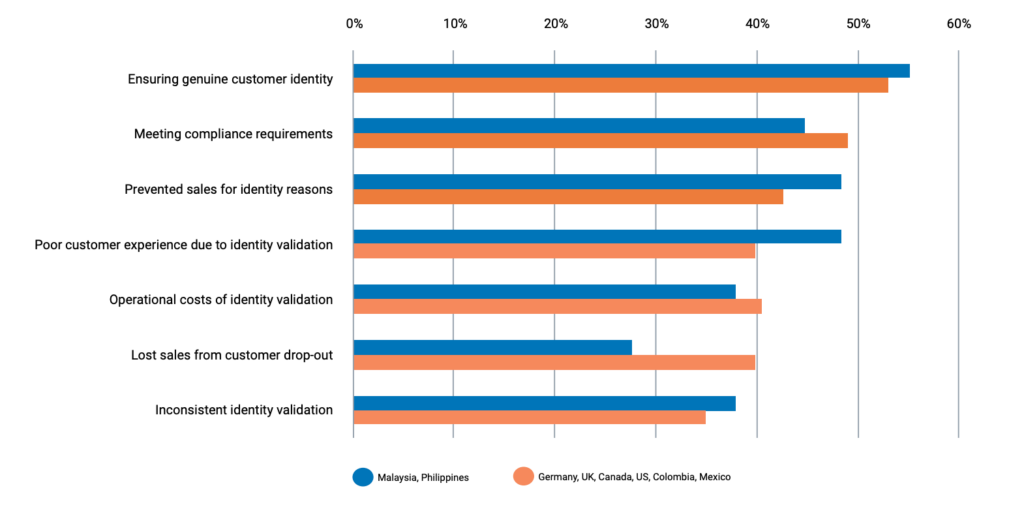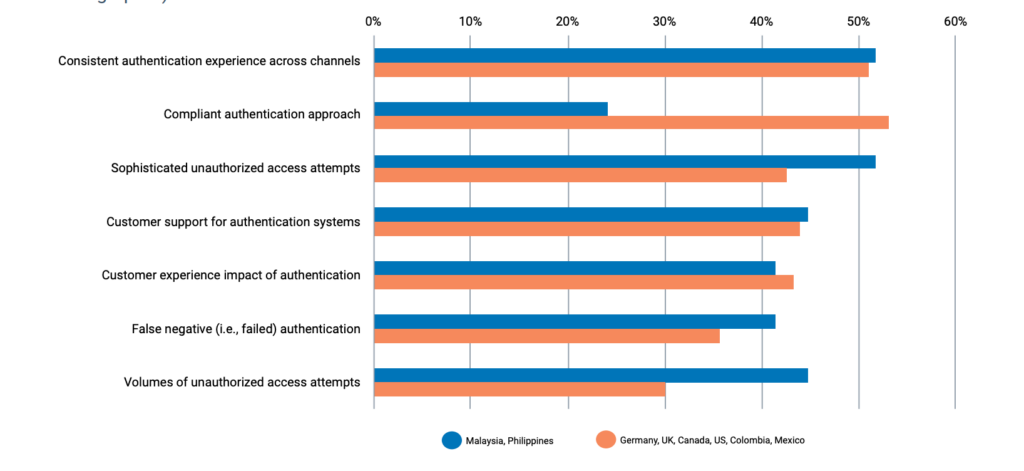FICO Survey Reveals Banks in Philippines Struggling With Digital Identity Authentication
FICO, a global analytics software firm, has released its Identity in Digital Banking Survey, which found that the complexity and cost of validating the identity of digital banking customers are the top pain points for banks in the Philippines.
Almost 50% of respondents surveyed nominated the ‘high level of manual processes to validate customer identities’ as their top challenge along with ‘consistent collection of supporting data/documents’ and the ‘need for physical validation of identity’.
The ‘time taken to verify identity’ and the ‘cost of third-party verification services’ were nominated by more than 40% of respondents.


“Identity challenges are intensifying with digital banking. You can see from the survey that many Philippine banks still have issues with manual processing that slows down the process, introducing friction into digital applications,”
said Subhashish Bose, FICO’s lead for fraud, security and compliance in Asia Pacific.
“Indeed, a third of banks still force customers to go to a branch to open a personal bank account. However, lenders will need to shift toward identity verification that is seamlessly integrated into the digital application process and can be rapidly confirmed or risk losing business.”
FICO’s previous consumer study found that a large percentage of Filipinos (45% – 67%, depending on the action required) said they should be able to complete all aspects of account opening online or on their phone.
In fact, if all actions required to complete an account opening could not be accomplished in-session, only 41% of Filipino consumers said they would carry out the necessary offline actions as soon as possible. A further 13% said they would try a competitor while 5% said they would give up completely.
“Filipinos are comparing their banking experience not just to other lenders but to other digital businesses. The notion that banks can afford to ignore delivering the kind of instant gratification delivered by companies like Uber, Netflix, and Amazon just because they are selling financial products will disappear this decade.”
said Bose.
Concerns about Authentication

Authentication strategies at Philippine banks are driven more by security than by regulation; concern over the sophistication (50%) or volume (29%) of attempts to breach access controls is much higher than in the other seven countries surveyed, where, on average, concern levels for sophistication are 43%, and volume 30%.
This can partly be explained by fewer and less onerous guidelines or legislations around authentication such as those in the US, Canada, and Europe. However, if criminals are successful it will be only a short time before Filipino regulators impose more rules around authentication.
“Another issue here is that many banks in the Philippines are not making separate fraud and authentication decisions. They are less concerned with user experience and therefore will ask a customer to authenticate again for a particular action which they consider high risk, even if they have already been identified in the same session.”
Bose added.
Technology challenges are also impacting the ability of Philippine banks to authenticate customers. The survey revealed that banks feel the time taken for systems change is a problem (45%), as well as inflexibility around identity approaches (45%). This may be due to rapid innovations in authentication and the number of technologies deployed (biometric authentication, for example, is deployed in 93% of respondents).
The survey showed that adoption of this strategic approach is already underway. While only 7% of banks say they currently have a common identity management platform or orchestration layer, 78% of banks say that they have ambitions to make the move within the next three years.
Featured image credit: Pexels
